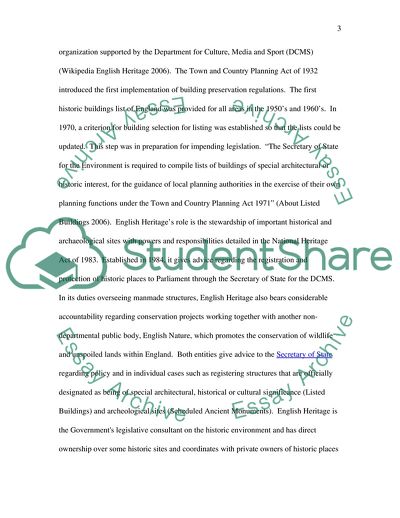Cite this document
(UK Heritage Protection System Coursework Example | Topics and Well Written Essays - 3000 words, n.d.)
UK Heritage Protection System Coursework Example | Topics and Well Written Essays - 3000 words. https://studentshare.org/history/1703341-appraise-the-current-uk-heritage-protection-system-and-consider-the-needs-and-opportunities-for-its-reform
UK Heritage Protection System Coursework Example | Topics and Well Written Essays - 3000 words. https://studentshare.org/history/1703341-appraise-the-current-uk-heritage-protection-system-and-consider-the-needs-and-opportunities-for-its-reform
(UK Heritage Protection System Coursework Example | Topics and Well Written Essays - 3000 Words)
UK Heritage Protection System Coursework Example | Topics and Well Written Essays - 3000 Words. https://studentshare.org/history/1703341-appraise-the-current-uk-heritage-protection-system-and-consider-the-needs-and-opportunities-for-its-reform.
UK Heritage Protection System Coursework Example | Topics and Well Written Essays - 3000 Words. https://studentshare.org/history/1703341-appraise-the-current-uk-heritage-protection-system-and-consider-the-needs-and-opportunities-for-its-reform.
“UK Heritage Protection System Coursework Example | Topics and Well Written Essays - 3000 Words”. https://studentshare.org/history/1703341-appraise-the-current-uk-heritage-protection-system-and-consider-the-needs-and-opportunities-for-its-reform.


